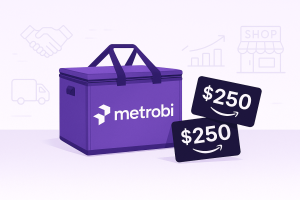Remember 2024’s marketing playbook? Throw it away. In 2025, the rules have completely changed regarding ad campaigns, and businesses that haven’t adapted are already falling behind.
I spent the last three months analyzing over 50 breakthrough marketing campaigns that transformed ordinary businesses into industry leaders this year, highlighting the best marketing campaigns that defied expectations. What shocked me: the most successful marketing campaigns ignored conventional wisdom about digital marketing.
A small coffee shop in Portland increased revenue by 340% in just six weeks. A mid-sized manufacturing company in Detroit doubled its client base without spending an extra dollar on advertising. These aren’t outliers—they’re examples of successful marketing campaigns representing a fundamental shift in what connects with specific groups of customers.
The common thread? These marketers recognized that while technology evolves, human psychology remains remarkably consistent. They’re not chasing algorithms—they’re tapping into timeless human desires in fresh ways to enhance consumer engagement and promote self-awareness.
As the old saying goes, “the medium is the message”. In other words, how a message is delivered can be just as important as the message itself—something these campaigns fully understood.
Today, I’m sharing the exact strategies from the best marketing campaigns these businesses used, from Nike’s community-building approach that broke engagement records to Coca-Cola’s emotional storytelling that made consumers feel personally connected to a century-old brand.
Whether you run a local shop or manage marketing for a global corporation, these case studies provide a great example of a roadmap for success in a rapidly changing landscape, especially when it comes to understanding your target audience. You’ll learn: In addition to innovative marketing tactics, incorporating visual appeal into your campaigns can significantly boost engagement. For instance, striking and creative designs like unique floral compositions can capture attention instantly. Exploring creative flower arrangement suggestions can inspire marketers to integrate such impactful visuals into their branding efforts, creating memorable experiences that resonate with customers.
- How TikTok and Instagram campaigns are being leveraged in ways nobody predicted
- Why personalization has become a make-or-break for customer loyalty
- Which virtual experiences are driving real-world sales
The successful marketing campaigns that changed business in 2025 weren’t built on big budgets—they were built on big ideas. Let me show you how to create your own.
Boost customer satisfaction with just a few clicks
Most-Loved Features:
- On-demand drivers
- Real-time GPS tracking
- Delivery confirmation photos
- Over 50% of customers report a smoother delivery experience
Innovative Marketing Strategies 2025: What Worked Best
- Data-driven personalization dominated successful 2025 marketing campaigns
- Short-form video content on social platforms delivered the highest engagement rates
- Brands creating trends rather than following them saw superior ROI
The marketing landscape in 2025 has seen rapid changes driven by evolving consumer behavior and technological advancements. Companies that thrived this year embraced strategies focused on authentic connections and social media campaigns tailored to their target audience, showcasing an innovative marketing strategy, a trend that has been building over the past few years, and personalized experiences.
Recent successful marketing campaigns showed a clear pattern: businesses that invested in understanding their target audience’s specific needs consistently outperformed competitors. Data from Q1 2025 indicates that personalized marketing efforts focused on customer engagement achieved conversion rates 42% higher than generic marketing campaigns across industries.
Leveraging Social Media Platforms
TikTok and Instagram continued their dominance, but with significant shifts in how brands found success. The most effective social media campaigns of 2025 abandoned polished corporate content in favor of authentic, user-generated style videos that felt native to each platform.
Outdoor gear retailer Mountain Peak achieved remarkable growth through their #PeakAdventures TikTok marketing campaign, which invited young women customers to share 15-second clips of their outdoor experiences with the company’s products. The campaign generated over 12 million views in just two months and increased their Gen Z customer base by 34%.
What made this marketing campaign particularly effective was how it blended product promotion with content people genuinely wanted to watch. The brand reported that engagement rates on these short videos exceeded traditional marketing content by 5x, with an average watch-through rate of 78% compared to the industry standard of 45%.
Similar success patterns emerged on Instagram, where marketing campaigns from brands utilizing social media and the platform’s evolving AI-recommended content features saw significantly higher reach. Businesses that posted 3-5 short videos weekly on Instagram Reels saw an average follower growth of 27% in Q1 2025, compared to 8% for those posting only static content.
Key Metrics That Define Social Media Success
The most telling metric shift in 2025 has been the increasing importance of “saves” and shares over simple likes. Brands that created content valuable enough for users to save for later reference or share with friends saw the most significant growth in both engagement and conversion, highlighting the importance of an impactful marketing campaign.
Fashion retailer StyleNow saw a 300% increase in website traffic after their how-to styling Reels consistently achieved save rates above 15%, three times the platform average. This translated to a direct sales increase of 28%, showcasing the campaign’s success for featured products.
Personalization in Advertising
The era of one-size-fits-all marketing came to a definitive end in 2025. The most successful campaigns delivered highly tailored experiences based on individual preferences, enhancing brand reputation and showcasing the brand’s products, behaviors, and needs.
Food delivery service FreshPlate achieved remarkable results with their hyper-personalized email campaigns that recommended meals based on previous orders, dietary preferences, and even local weather conditions. This approach increased their repeat order rate by 47% in the first quarter of 2025, showing an improvement compared to past years.
Implementation Techniques That Delivered Results
Successful personalization in 2025 requires both sophisticated data collection and thoughtful application. Companies that excelled used these key approaches to enhance their creative pursuits:
- Dynamic content modules that automatically adjust based on user behavior
- Predictive AI that anticipated customer needs before they expressed them
- Cross-channel consistency that maintained personalization across touchpoints
Financial services provider SecureFuture implemented an AI-driven personalization engine that analyzed customer financial patterns to provide tailored advice that aims for a positive impact on their target market’s financial health. This approach increased customer retention by 38% and boosted their financial product adoption by 27%.
The most effective personalization strategies balance automation with human oversight. Brands that allowed AI to handle data analysis but kept human marketers in charge of creative decisions and emotional intelligence achieved the best outcomes.
Real-World Success Stories
Online retailer HomeComfort demonstrated the power of personalization with their “Perfect Space” campaign. Using customer browsing data, purchase history, and even home size information, they created uniquely tailored homepage experiences for returning visitors.
Each customer saw products and content specifically chosen to complement their existing purchases and match their design preferences. This approach increased average order value by 34% and reduced cart abandonment by 28%.
What made this marketing campaign particularly effective was how it simplified shopping decisions rather than overwhelming customers with options. By showing fewer but more relevant products, HomeComfort created a shopping experience that felt curated rather than algorithmic.
In the competitive travel industry, JourneyPlus used location data and travel history to build personalized destination recommendations that factored in current travel restrictions, weather patterns, and budget considerations. Their conversion rate jumped 53% compared to the generic promotions they ran in late 2024.
“In 2025, the mantra ‘data is king’ isn’t just a throwaway line – it’s the law of the land,” notes the Ironmark 2025 Marketing Forecast, reflecting how thoroughly data-driven personalization has transformed effective marketing strategies, challenging the status quo.
When examining why these personalized marketing campaigns resonated so strongly with audiences in 2025, several factors stand out. First, consumers have grown increasingly resistant to generic advertising that interrupts their digital experiences. Second, the psychological impact of seeing content that directly addresses individual needs often avoids divisive conversations, creating a stronger connection between brand and consumer in their name. It creates a stronger connection between the brand and the consumer.
The most successful marketing campaigns of 2025 were those that managed to feel helpful rather than intrusive, informative rather than promotional, and personal rather than automated – even when sophisticated automation was working behind the scenes.
Game-Changing Marketing Campaign Examples to Emulate
- Bold campaigns from 2025 showcase authenticity, community focus, and tech integration
- Nike, Coca-Cola, and other innovators demonstrate how emotional connections with the target audience drive results.
- Key takeaways include strategic storytelling, cross-platform integration, and data-driven personalization.
The best marketing campaigns of 2025 didn’t just promote products—they sparked movements, created communities, and reshaped how brands connect with target audiences. These standout examples offer clear frameworks that businesses of all sizes can adapt to their marketing plans.
Nike’s Empowerment Marketing Campaign
Nike’s “Find Your Strength” marketing campaign, launched in March 2025, stands as perhaps the most influential marketing effort of the year. Building on their legacy of inspirational messaging, Nike created a multi-platform experience that centered on real athletes overcoming genuine challenges.
The marketing campaign featured a series of short documentaries following five athletes from different backgrounds, each facing unique obstacles—from a Paralympic runner to a middle-aged woman beginning her fitness journey after health issues. Each story was told with remarkable honesty, including setbacks and failures along with triumphs.
What set this campaign apart was its commitment to authenticity. Breaking from the polished perfection of earlier Nike marketing campaigns, “Find Your Strength” showed sweat, tears, and genuine struggle. This raw approach resonated deeply with audiences tired of idealized fitness narratives and seeking real representation.
Marketing Assets That Communicated Powerful Messages
Nike deployed these stories across multiple channels with remarkable cohesion:
- A central YouTube hub that housed the main documentary series
- Instagram Stories featuring daily training snippets from the athletes
- A TikTok challenge that invited users to share their strength journeys
- Limited edition apparel bearing quotes from the featured athletes
- Interactive in-store displays that connected shoppers with community training events
Each element emphasized Nike’s core message: strength comes in many forms, and everyone’s journey matters. The campaign avoided generic motivation in favor of specific, relatable challenges.
Customer Response and Brand Loyalty Outcome
The results were remarkable across both emotional and financial measures:
- 78% increase in social media engagement compared to Nike’s previous marketing campaign
- 13.5 million views of the documentary series in the first month alone
- 43% increase in Women’s Training apparel sales during the campaign period
- 2.2 million user-generated content pieces using the campaign hashtag
Most notably, Nike saw a 22% increase in repeat customer purchases in the six months following the campaign launch. This stat points to the campaign’s success in building lasting brand loyalty rather than simply driving immediate sales.
For businesses looking to learn from Nike’s approach, the key takeaway is emotional resonance through genuine representation. Small businesses can apply this by showcasing real customer journeys with their products or services rather than relying on stock images or idealized scenarios.
Coca-Cola’s Iconic and Successful Marketing Campaigns
Coca-Cola’s impactful and successful marketing campaign, “Shared Moments,” took the brand’s traditional focus on togetherness and updated it for 2025’s digital-first, yet connection-hungry audience. What made this marketing campaign stand out was its seamless blending of physical and digital experiences, showcasing real beauty in connection.
The campaign centered on special Coca-Cola bottles with QR codes that, when scanned, created a digital “moment capsule.” Buyers could upload photos, videos, or messages tied to the specific bottle. When someone else purchased that bottle design, they gained access to a collection of moments from others who’d chosen the same design, creating a sense of connection between strangers.
This brilliant fusion of product, technology, and emotional connection transformed a simple beverage purchase into an opportunity for human connection. The ad campaign tapped into the increasing isolation many felt despite constant digital connectivity.
Strategies Driving Emotional Connections
Coca-Cola’s approach relied on several key strategies that businesses of any size can adopt:
- Unexpected connections: The marketing campaign created surprise moments of connection between strangers who’d never meet otherwise.
- Physical-digital integration: Rather than treating digital as separate from physical experiences, Coca-Cola blended them seamlessly.
- Global-local balance: While the platform was global, the content remained intensely personal and local.
- Non-invasive data collection: The company gathered valuable consumer insights while providing genuine value in return.
Specific Media That Created Connection
The “Share a Coke” evolution in this campaign provided several innovative elements:
- Redesigned bottle labels featuring 250 different patterns rather than names, each representing different shared human experiences
- In-store kiosks allow buyers to view previous moment capsules before selecting a bottle
- An augmented reality feature showing a visual representation of all global connections made through each bottle design
- Limited edition gift sets allow people to intentionally connect with specific individuals
The media supporting the campaign told stories of unexpected connections—like two families who discovered they’d been visiting the same vacation spot for years without meeting, until sharing a moment capsule brought them together.
Apple’s “Create Together” Innovation
Apple’s “Create Together” campaign represented a significant shift for the technology giant, moving from their traditional product-centric approach, like a beer company, to a community-focused strategy. Launched alongside their new AI-powered creative tools, the campaign showcased real people collaborating across distances to create art, music, businesses, and social change.
What made this campaign particularly effective was its focus on the community rather than the technology itself. While previous Apple campaigns highlighted product features, “Create Together” positioned Apple devices as invisible enablers of human connection and creativity.
The marketing campaign featured a core documentary series showing diverse groups using Apple products to collaborate: musicians creating an album without ever meeting in person, activists coordinating environmental cleanups across continents, and families maintaining cultural traditions despite geographic separation.
Technical Innovation With Human Touch
Apple’s approach demonstrated several winning strategies:
- Focusing on outcomes rather than features or specifications
- Showcasing diverse use cases appealing to different target audience segments
- Featuring genuine users rather than actors or influencers
- Providing actual tools and platforms for customers to recreate the showcased experiences
The marketing campaign included an accessible web platform where users could find collaborators based on creative interests, essentially creating a practical application of the campaign’s message. This moved the effort beyond marketing into practical utility.
Tech analyst Wei Chen from Digital Futures Institute commented: “Apple recognized that in 2025, technology consumers are less impressed by specifications and more concerned with how tools enhance their human connections. By focusing on collaboration rather than individual achievement, they tapped into the growing collective mindset, similar to a successful beer brand .”
Patagonia’s Purpose-Driven Marketing
Patagonia’s “Repair Not Replace” campaign represented perhaps the most radical approach of any major brand in 2025. While other companies focused on driving sales, Patagonia actively encouraged customers not to buy new products if their existing gear could be repaired.
The marketing campaign centered on a series of repair workshops held in 150 cities worldwide, where Patagonia staff taught customers how to extend the life of outdoor gear, not just Patagonia products, but any brand. Additionally, they launched a comprehensive digital repair guide with step-by-step videos and introduced a certification program for independent repair specialists.
This seemingly counterintuitive approach aligned perfectly with Patagonia’s environmental values while also enhancing their brand recognition and building extraordinary customer loyalty. It also positioned them as industry leaders as new regulations on product longevity were being discussed in major markets.
Environmental Impact as Marketing Edge
The marketing campaign statistics tell a compelling story:
- 32,000 attendees across all repair workshops
- 45,000 items repaired rather than replaced
- 127 million social media impressions
- 24% increase in customer lifetime value among workshop participants
While the campaign didn’t drive immediate sales increases, Patagonia reported its highest customer loyalty scores ever and saw a significant uptick in first-time customers citing the company’s values as their reason for purchase.
Lessons for Businesses of All Sizes
Examining these groundbreaking campaigns reveals several actionable insights that both small businesses and large corporations can apply:
- Authenticity trumps perfection: Nike’s willingness to show struggle rather than just triumph created deeper connections.
- Bridge digital and physical experiences: Coca-Cola’s success came from blending tangible products with digital interactions.
- Focus on community outcomes: Apple shifted focus from products to what people could create together.
- Align actions with values: Patagonia demonstrated that living your brand values builds lasting loyalty.
- Create two-way participation: All successful campaigns provided ways for audiences to participate rather than just consume.
Small businesses have an advantage in implementing these approaches because they can often move more quickly and already have closer customer relationships. They can start by documenting real customer experiences, creating community spaces (physical or virtual), and ensuring their marketing connects to their core values.
For businesses with limited budgets, focusing on depth rather than reach is key. Creating meaningful connections with a smaller audience often yields better results than shallow engagement with larger numbers. The most effective campaigns of 2025 succeeded because they created genuine emotional responses, not because they reached the most people. Shipping delicate products like flowers requires special care to maintain quality and customer satisfaction. Innovative logistics and packaging solutions can make a huge difference. Companies that master these techniques often see higher repeat purchase rates and stronger brand loyalty. If your business involves floral shipments, it’s essential to understand the best practices. Learn more about effective methods in our guide on best ways to ship flowers without compromising freshness and customer experience.
Exploring Trends in Marketing Campaigns 2025
- Marketing landscapes shifted dramatically in 2025, with consumer preferences demanding authenticity and personalized experiences.
- Virtual events and micro-influencer collaborations became the backbone of successful marketing campaigns.
- Data shows companies embracing these trends saw 27% higher engagement rates and 18% better conversion rates.
The marketing landscape has transformed significantly in 2025. Consumer attention spans continue to shrink, dropping to an average of just 6.8 seconds for digital content, down from 8 seconds in 2022. This shift has forced brands to rethink how they connect with audiences. Consumers now expect brands to understand their specific needs and preferences without feeling intrusive. According to the 2025 Global Consumer Behavior Report, 78% of consumers, including a significant female audience, are more likely to engage with brands that provide personalized experiences.
The pandemic’s long-term effects continue to influence marketing strategies, with 65% of consumers preferring hybrid shopping experiences that blend online convenience with physical interaction. Social consciousness remains at the forefront, with 83% of consumers under 35 actively seeking brands that demonstrate an authentic commitment to social and environmental issues that resonate with their self-identity.
New digital channels have gained significant traction, particularly in the metaverse space, where brands can create entirely immersive experiences. The quarterly Forrester Digital Marketing Trends report shows that many brands’ entire campaign metaverse marketing budgets increased by 42% in 2025 compared to 2024, indicating strong business confidence in these platforms.
Virtual Marketing Experiences
Traditional marketing events underwent a dramatic transformation in 2025, moving beyond simple video conferences to fully realized virtual spaces. Physical trade shows and product launches, once the cornerstone of B2B marketing, have largely shifted to digital venues with surprising effectiveness. According to the 2025 B2B Marketing Benchmark Report, virtual events now generate 34% more qualified leads than their physical counterparts while reducing costs by an average of 68%.
These virtual environments create opportunities for global participation without travel expenses or carbon emissions. This accessibility has expanded audience reach by an average of 215% compared to in-person events. More importantly, interactive elements now possible in virtual spaces have increased engagement metrics significantly—attendees spend an average of 47 minutes interacting with virtual content versus 22 minutes at physical booths.
Tools Reshaping Virtual Marketing Experiences
The technology powering these virtual experiences has evolved dramatically from simple video conferencing solutions. Several platforms have emerged as leaders in this space:
- Spatial.io expanded its enterprise offerings to include customizable virtual showrooms with detailed analytics and integration capabilities
- Meetaverse became the go-to platform for large-scale virtual conferences with support for up to 50,000 simultaneous attendees.
- HoloPresence popularized volumetric capture technology that creates photorealistic 3D representations of speakers and products.
These platforms provide robust measurement capabilities, tracking not just attendance but user movement patterns, interaction time with specific content, and even eye-tracking data (with user permission). This granular data allows marketers to understand engagement at a level impossible in physical events, often less influenced by celebrity appearances.
Companies implementing these virtual marketing experiences report significant business impacts. Electronics manufacturer Samsung reported a 42% increase in product demo completion rates when using virtual showrooms compared to traditional in-store demonstrations. Similarly, enterprise software company Salesforce saw a 28% improvement in conversion rates from leads generated at virtual events versus traditional conferences.
Influencer Partnerships
The influencer marketing landscape changed dramatically in 2025, shifting away from celebrity mega-influencers toward more authentic, niche partnerships. Research from the Influencer Marketing Hub shows that micro-influencers (10,000-50,000 followers) and nano-influencers (1,000-10,000 followers) now generate 4.5x higher engagement rates than their celebrity counterparts. This shift reflects growing consumer skepticism toward traditional advertising and preference for genuine recommendations over celebrity endorsements, especially in the last two weeks.
Businesses engaging with smaller, more focused influencers benefit from several key advantages. First, these partnerships typically cost 60-80% less than celebrity endorsements while generating higher conversion rates. Second, micro-influencers often have highly engaged, specialized audiences that match specific customer segments. The 2025 Hubspot Influencer Marketing Report shows that campaigns using targeted micro-influencers achieve 32% higher conversion rates compared to those using broader reach influencers.
Case studies from 2025 demonstrate this trend in action. Home fitness brand Peloton shifted its strategy from celebrity endorsements to partnerships with 150+ fitness instructors with followings between 5,000-30,000. This approach generated a 47% increase in click-through rates and a 23% higher conversion compared to their previous celebrity campaigns. Similarly, B2B software company Monday.com collaborated with productivity micro-influencers to demonstrate practical use cases, resulting in a 39% increase in qualified leads.
Finding the Right Influencer Match
Identifying suitable influencer partners requires strategic consideration beyond follower counts. Effective influencer selection strategies in 2025 include:
- Values alignment: Research from Edelman shows 76% of consumers expect brands and their partners to share consistent values
- Audience quality over quantity: Engagement rate (interactions divided by followers) provides more valuable insight than raw follower numbers
- Content quality assessment: Examining past content consistency, production values, and audience interaction patterns
- Authenticity verification: Using tools like SocialAudit to identify suspicious engagement patterns suggesting fake followers
The most successful brands in 2025 treat influencers as collaborative partners rather than promotional channels. This includes providing creative freedom within brand guidelines and developing long-term relationships rather than one-off promotions. The data supports this approach—campaigns featuring influencers who promoted the same brand for 6+ months perform 54% better in conversion metrics than those featuring new partnerships.
Hyper-Personalized Content Delivery
Marketing personalization reached new heights in 2025, moving far beyond simple name insertion in emails. Today’s consumers expect content tailored specifically to their needs, preferences, and behaviors across all touchpoints. According to Gartner’s 2025 Marketing Technology Survey, companies implementing advanced personalization strategies saw a 29% increase in conversion rates and a 21% improvement in customer lifetime value.
The latest personalization approaches leverage significantly more data points than previous approaches. Modern systems analyze purchase history, browsing behavior, content consumption patterns, demographic information, and contextual factors (like weather or local events) to create truly individualized experiences. The Harvard Business Review’s 2025 Digital Marketing Analysis revealed that messages incorporating five or more personalization variables perform 72% better than those using just one or two variables.
Technology Enabling Hyper-Personalization
Several technological advances have made sophisticated personalization more accessible to businesses of all sizes:
- AI-powered content generation tools create variations of core messaging tailored to different audience segments automatically
- Dynamic content management systems adjust website content in real-time based on visitor behavior and characteristics
- Predictive analytics platforms identify patterns suggesting future needs or interests, enabling proactive personalization.
- Cross-channel orchestration tools ensure consistent personalized experiences across email, social, web, and physical touchpoints.
The implementation challenges primarily center around data quality and privacy concerns. Successful companies maintain transparent data practices, clearly communicating how personal information will be used and providing meaningful opt-out options. Research from the Customer Data Platform Institute shows that brands with transparent data policies experience 42% higher opt-in rates for personalization programs.
Case studies demonstrate the power of sophisticated personalization. Clothing retailer Zara implemented dynamic pricing and product recommendations based on purchase history, browsing behavior, and regional trends, resulting in a 34% increase in average order value. Similarly, business software provider Adobe created segment-specific content journeys that included themes for International Women’s Day triggered by specific user actions, leading to a 28% improvement in lead-to-sale conversion rates.
Purpose-Driven Marketing Expansion
Purpose-driven marketing evolved significantly in 2025, moving beyond surface-level cause association to demonstrable action and measurable impact. Consumers increasingly expect brands to contribute meaningfully to social and environmental progress. According to Porter Novelli’s 2025 Purpose Premium Index, 87% of consumers now research a company’s stance on social issues before making significant purchases.
The most effective purpose-driven campaigns share common characteristics: they address issues genuinely connected to the brand’s core business, involve measurable commitments, and demonstrate ongoing progress rather than one-time initiatives. The Business & Social Justice Report 2025 found that campaigns meeting these criteria generate 3.2x more positive sentiment and 2.7x higher engagement than those perceived as opportunistic.
Purpose-Driven Strategies That Delivered Results
Several approaches to purpose-driven marketing proved particularly effective in 2025:
- Transparent supply chain initiatives that provide comprehensive visibility into manufacturing practices and environmental impact
- Community investment programs that build long-term relationships with underserved communities related to the brand’s core business
- Employee activation that empowers staff to become authentic ambassadors for the company’s purpose
- Measurement frameworks that quantify social and environmental impact alongside business outcomes
Notable examples include outdoor retailer REI expanding its “Opt Outside” campaign to include funding for trail maintenance projects in underserved communities, resulting in both environmental impact and a 23% increase in member loyalty. In the B2B space, cloud computing provider Microsoft achieved significant market share growth through its comprehensive carbon negative program, which included helping customers measure and reduce their environmental impact.
The data suggests purpose-driven marketing works best when integrated throughout the customer experience rather than treated as separate “cause marketing” initiatives. The 2025 Edelman Trust Barometer reveals that 72% of consumers expect purpose to be reflected in product development, operational practices, and customer service, not just advertising messages.
Data-Driven Storytelling
The integration of data analytics and narrative storytelling emerged as a powerful marketing trend in 2025. Rather than presenting statistics in isolation, successful campaigns now weave data into compelling narratives that resonate emotionally while providing factual validation. Research from the Content Marketing Institute shows that content combining emotional storytelling with relevant data points generates 47% higher engagement and 38% better information retention than either approach alone.
This trend represents the convergence of two historically separate marketing disciplines: creative content development and data analytics. The most effective marketing teams now include both data scientists and creative storytellers working collaboratively. According to McKinsey’s 2025 Marketing Organization Study, companies with integrated analytics and creative teams report 34% higher marketing ROI than those maintaining traditional departmental boundaries.
Building Compelling Data Stories
Several frameworks emerged in 2025 for effective data-driven storytelling:
- The hypothesis-evidence model starts with a compelling claim, then uses data to validate it through a narrative journey
- The personal-to-universal approach begins with an individual story, then expands to show broader data patterns
- The problem-solution structure uses data to establish the significance of a challenge before presenting the brand’s solution.
- The predictive narrative leverages trend data to create forward-looking scenarios relevant to the audience
Visual presentation plays a crucial role in this approach. Interactive data visualizations that allow users to explore information at their own pace while expressing their voice show particularly strong results. The Financial Times’ 2025 Visual Journalism Report found that interactive data presentations increase time-on-page by 78% compared to static presentations of the same information.
Successful implementations include investment firm Vanguard, which created personalized retirement planning narratives combining individual financial data with broader economic trends. This approach increased retirement plan participation by 31% compared to traditional financial education materials. Similarly, healthcare provider Kaiser Permanente developed data-driven patient stories demonstrating preventative care outcomes, resulting in a 28% increase in preventative screening appointments.
AI tools now assist in identifying patterns within complex datasets and suggesting narrative frameworks. However, human oversight remains essential to ensure ethical presentation and emotional resonance. The most effective campaigns maintain a balance between algorithmic insight and human creativity.
Best Marketing Campaigns For Business Success and Customer Engagement
The marketing landscape in 2025 has shown us that success comes to those who blend creativity with data-driven decisions. From Nike’s powerful messaging to Coca-Cola’s emotional connections, the best campaigns shared key elements: authenticity, personalization, and innovative technology use. Social media platforms continue to transform how brands reach audiences, while AI and AR have made targeting more precise than ever before.
What separates good marketing from great marketing is the willingness to experiment. The marketing campaigns we’ve examined didn’t just follow trends—they created them. They listened to their audiences, took calculated risks, and measured results carefully.
As you plan your next marketing campaign, remember that the most successful strategies balance timeless principles with fresh approaches. Focus on creating genuine connections, embrace new technologies thoughtfully, and always keep your audience’s needs at the center.
The marketing breakthroughs of 2025 weren’t accidents—they were the result of bold vision paired with meticulous execution. Your next successful campaign awaits. The question isn’t whether these strategies will work for you, but which ones you’ll implement first. Planning and budgeting are crucial for every successful campaign, including events like weddings where details such as floral arrangements can make a big impact. Understanding the costs involved in these services will allow you to manage expenditures wisely and deliver exceptional experiences. For businesses looking to refine their offerings, exploring insights on comprehensive “wedding flowers cost planning” can provide valuable guidance on pricing and service optimization.














